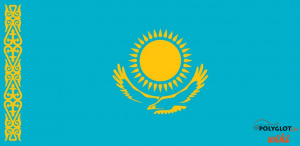Difference between revisions of "Language/Kazakh/Grammar/Questions"
m (Quick edit) |
m (Quick edit) |
||
| Line 51: | Line 51: | ||
<hr>If you have any questions, please ask them in the comments section below.<br>Feel free to edit this wiki page if you think it can be improved. 😎 | <hr>If you have any questions, please ask them in the comments section below.<br>Feel free to edit this wiki page if you think it can be improved. 😎 | ||
==Related Lessons== | |||
* [[Language/Kazakh/Grammar/Consonants|Consonants]] | |||
* [[Language/Kazakh/Grammar/Past-Tense-(ӨТКЕН-ШАҚ)|Past Tense (ӨТКЕН ШАҚ)]] | |||
* [[Language/Kazakh/Grammar/Plurals|Plurals]] | |||
* [[Language/Kazakh/Grammar/Negation|Negation]] | |||
* [[Language/Kazakh/Grammar/Pronouns|Pronouns]] | |||
* [[Language/Kazakh/Grammar/Conditional-Mood|Conditional Mood]] | |||
* [[Language/Kazakh/Grammar/Future-Tense|Future Tense]] | |||
* [[Language/Kazakh/Grammar/Nouns|Nouns]] | |||
* [[Language/Kazakh/Grammar/Adjectives|Adjectives]] | |||
{{Kazakh-Page-Bottom}} | {{Kazakh-Page-Bottom}} | ||
Revision as of 22:56, 25 February 2023
Hi Kazakh learners! 😊
In today's lesson, we will be discussing how to ask questions in the Kazakh language. Asking questions is an important part of any language, and it is essential to understand the rules and structure of Kazakh questions in order to communicate effectively.
Basic Question Structure
The basic structure of a question in Kazakh is very similar to English. The subject of the sentence comes first, followed by the verb, and then the object. For example:
- Men ne isteymin? (What do I want?)
- Sen nege keldin? (Why did you come?)
Yes/No Questions
Yes/no questions are formed by adding the particle -pa to the end of the sentence. For example:
- Sen keldin-pa? (Did you come?)
- Sen isteysiz-pa? (Do you want?)
Wh-Questions
Wh-questions are formed by adding the appropriate wh-word at the beginning of the sentence. For example:
- Neye isteymin? (What do I want?)
- Kenege keldin? (To whom did you come?)
Other Question Structures
In addition to the basic question structure, there are several other ways to form questions in Kazakh.
Tag Questions
Tag questions are formed by adding the particle -ma to the end of the sentence. For example:
- Sen keldin-ma? (You came, right?)
- Sen isteysiz-ma? (You don't want, do you?)
Negative Questions
Negative questions are formed by adding the particle -ma to the end of the sentence and using the negative form of the verb. For example:
- Sen kelmeysiz-mi? (You didn't come, did you?)
- Sen istemeymiz-mi? (We don't want, do we?)
Conclusion
Asking questions in Kazakh is not difficult once you understand the basic structure and the various ways to form questions. With practice, you will be able to ask questions confidently and accurately.
If you have any questions, please ask them in the comments section below.
Feel free to edit this wiki page if you think it can be improved. 😎
Related Lessons
- Consonants
- Past Tense (ӨТКЕН ШАҚ)
- Plurals
- Negation
- Pronouns
- Conditional Mood
- Future Tense
- Nouns
- Adjectives
